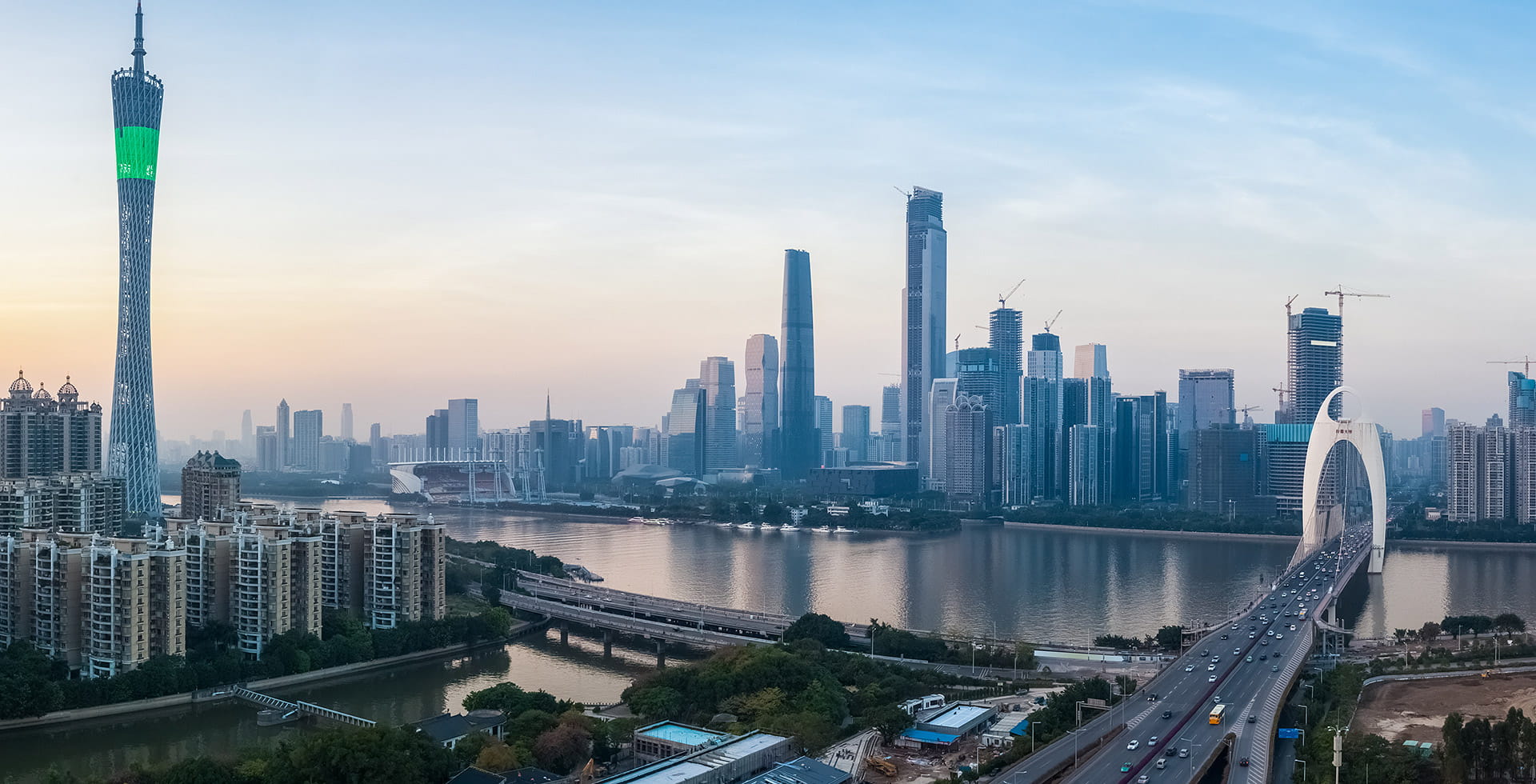Water infrastructure: why investment is so urgently needed

Summary
One might think that in the US, the issue of water infrastructure should not be an extraordinary problem. But this is not the case. Some water pipes are a hundred years old, dams are dangerous and lead pipes are a concern for politicians and citizens alike. The resulting investment pressure is immense. Yet the US is only one example of the global need to expand or improve water infrastructure. Read more about the opportunities and risks of the US water infrastructure and its importance for investors in our analysis.
Financial flows, the Fountain of youth for an ailing water infrastructure
Adequate water supply is essential for the human life as well for economies and businesses to thrive. Yet adequate water supply has become more of a luxury than a basic right due to a growing global water crisis where water supply is limited, quality issues prevail, and infrastructure is either old and breaking down or even non-existent in the case of the developing world. The implications of inadequate water infrastructure and lack of access to fresh, high quality water supply has far reaching consequences impacting nearly every individual, economy, and business around the world.
|
“A modern and robust water infrastructure is vital to the country’s economic development as it secures not only the supply of water but also prevents the spread of illness and diseases, fosters economic growth, and ensures a higher living standard.” |
Investments in new and upgraded water infrastructure are therefore necessary for high quality water supply access and effective wastewater treatment today and into the future. Such investments can support the development of resilient infrastructure which can more effectively meet both todays and future challenges tied to
- growing populations,
- urbanization,
- climate change and even
- cyber-attacks.
|
|
USD 35 billion for water related investments – for a start |
Given the necessity for such investments, the US Senate recently approved the US Drinking Water and Wastewater Infrastructure Act of 2021, which authorizes USD 35 billion of water related investments to be allocated to improving
- wastewater,
- stormwater,
- drinking water and
- water recycling
across the nation. It is one the few areas with bipartisan support in the US which highlights the urgent need for water investments.
|
|
Will funding run dry? |
The makeover of US water infrastructure which still has to be passed by the House is just one part of the larger USD 2 trillion infrastructure bill. As unanimous as the consensus is about the urgency to make the world’s biggest economy’s drinking water, wastewater, and stormwater systems future-proof, is the remaining investment deficit as the USD 35 billion will only slightly move the needle.
|
“In 2019 alone, the accumulative investment gap on water infrastructure was USD 81 billion.i Other calculations suggest annual needs of more than USD 100 billion each year for the next 20 years.ii” |
The consequences of funding shortfalls for water-reliant businesses and households are enormous as breakdowns and quality incidents will continue to plague local communities and disrupt future economic growth. So, filling this financial void is vital not only to allow for the current US water infrastructure to function properly but also to make it resilient for future requirements.
|
|
US water infrastructure: The yawning gaps |
The state of US water infrastructure
The United States’ public drinking water, wastewater, and stormwater systems resemble an outdated patchwork rug formed by pipes and lines from different centuries and with different levels of functionality.
|
“Because many pipes and pumps are nearly a one hundred years old and are operating at higher capacity than initially designed for, they are past the end of their usable life, leaking large amounts of water and oftentimes failing to meet today’s needs.” |
Municipalities are facing the question whether to
- upgrade,
- replace, or
- fortify these systems and
- how to make the water infrastructure future-proof to tackle severe weather events brought on by climate change.
- Additionally, they face the challenge to connect all US households to a regulated and safe water system. Currently, around a fifth of all households rely on septic tanks over public wastewater systems, and over two million lack properly connected drinking water and sanitation systems.iii Around a quarter of Americans are very concerned about the quality of their community’s drinking water.iv
The leaking lifeline
A modern and robust water infrastructure is vital to the country’s economic development as it secures not only the supply of water but also prevents the spread of illness and diseases, fosters economic growth, and ensures a higher living standard.
- The more water infrastructure leaks treated water, the more capital is lost negatively thus impacting both local residents and the local economy.
- It also affects the competitiveness of a city as a business located in an area with adequate water supply and infrastructure is more competitive and fosters long term growth.
- According to ASCE’s 2021 Infrastructure Report Cardv there is a daily loss of approximately 6 billion gallons (approx. 22.7 million m³) of treated water due to water main breaks occurring at one-minute intervals, amounting to a yearly loss of 2.1 trillion gallons (approx. 7.9 trillion m³).
|
“Within the next four years, almost three-quarters of all dams will be over 50 years old and gradually deteriorating. If not upgraded and rehabilitated, they will be vulnerably exposed to possible disaster scenarios leading to a loss of human lives and to a considerable damage of properties and existing infrastructure” |
- Following the estimations of the Association of State Dam Safety Officialsvi there are more than 2,300 state regulated high-hazard-potential dams in poor or unsatisfactory condition and in need of remediation.
- Urbanization combined with the age profile of wastewater treatment plans is increasingly resulting in system overloads and failures.
- 15% of wastewater treatment plants have reached/exceeded their designed capacity.
These are just a few examples illustrating the poor conditions of US water infrastructure and the dire need for infrastructure capital expenditure. The situation has far-reaching consequences and urgent action is needed to upgrade and modernize the world’s biggest economy’s drinking water, wastewater, and stormwater systems.
Water infrastructure investment gaps - immense despite investment plans
While the infrastructure investment proposals currently making their way through the US Congress would be a step in the right direction, the US water infrastructure gap is still immense.
|
“Estimates indicate that over USD 2 trillion in water investments are needed over the next 20 years to close the funding gap and develop adequate water infrastructure across the nation.” |
For example, the amount needed to replace the remaining lead pipes in the US is already over the projected USD 35 billion in the current proposal as estimates are as high as USD 45 billion to complete the replacements.
According to estimates of the Environmental Protection Agency (EPA) there are between 6.5 million and 10 million lead service lines in the US. On average, it costs about USD 4,700 to replace one single lead service line. Even if the EPA’s estimate is higher than needed in certain cases, the projected funds would quickly run dry.
|
|
What this means for investors: several angles for active investments |
Undoubtedly, the US Drinking Water and Wastewater Infrastructure Act of 2021 reflects a decisive first step to closing the existing funding gap. On the other hand, while it is ambitious it’s still short of meeting the most pressing water challenges as it cannot even address the remaining lead pipes which threaten the safety of US citizens. There are still substantial funding gaps that require capital expenditure to be addressed. That said, if this bill is passed later this summer, it will be a positive for water space and for water investments given the water equipment and projects that will be needed to make the upgrades.
|
“With every dollar invested in infrastructure between USD 4 and USD 6 return in economic activity to a community.“vii |
When considering the several aspects water infrastructure covers, we can clearly identify where active investments are needed and how they could pay off.
The removal of all lead service lines in the United States not only ensures clean drinking water for every American but it is also contributing to improved public health by preventing severe chronic diseases like lead poisoning, ultimately easing the financial burden on health systems. Additionally, it is likely to result in an attractive investment opportunity in companies that provide piping systems. Investor-owned networks can also play a role here as they can make improvements independent of infrastructure stimulus, many times at lower costs than municipalities.
To maintain and stop the loss of precious treated water companies have developed smart technologies and tools to detect leaks in water pipes.
Specialised companies that offer advanced water treatment technologies can detect and remove emerging contaminants from drinking water and help protect citizens from developing cancer after consuming poor water quality for years at a time.
The replacement of wastewater treatment plants reaching the end of their lifespan opens up interesting investment opportunities for companies who are experts in wastewater management and designing wastewater treatment plants.
Lookout: water infrastructure and cyber-attacks
While the USA and a big part of the world is focusing on how the US Drinking Water and Wastewater Infrastructure Act will contribute to revitalizing the aging US water infrastructure, positively impacting economic and job growth over the medium to long-term, there are still many under-researched and prominent risks. Just take cyber security, a topic gaining increasing importance for the protection of water infrastructure against cyber criminals. The cyber-attack on the water supply in Oldsmar, Florida and the Cybersecurity and Infrastructure Security Agency’s call to “install independent cyber-physical safety systems” is just one piece of evidence of the high relevance cyber security has for a future-proof water supply.
SDG-aligned investing for a more sustainable future:
Investment implications
Global Water strategies help
- to address the very real water-infrastructure and water-quality related challenges
- in the US and the rest of the world
- by investing in pure play water companies delivering solutions
- to the most pressing challenges.
across the nation. It is one the few areas with bipartisan support in the US which highlights the urgent need for water investments.

Investments may not only generate financial alpha given structural support of the theme, but also environmental and social alpha given the solutions-oriented approach. Such investments can help to upgrade and build resilient water infrastructure that is well prepared to face the challenges tied to climate change and ongoing population growth and urbanization.
This approach allows investors the ability to participate in a compelling long-term growth opportunity and contribute to the solutions of modern water infrastructure, a lifeline to society and the economy.
Find out more about sustainable investment at Allianz Global Investors here:
References:
i https://infrastructurereportcard.org/cat-item/wastewater/
ii http://www.uswateralliance.org/sites/uswateralliance.org/files/publications/VOW%20Economic%20Paper_0.pdf
iii https://www.asce.org/uploadedFiles/Issues_and_Advocacy/Infrastructure/Content_Pieces/the-economic-benefits-of-investing-in-water-infrastructurereport.pdf
iv http://uswateralliance.org/sites/uswateralliance.org/files/2021%20Value%20of%20Water%20Survey%20Analysis%20Slides.pdf
v https://infrastructurereportcard.org
vi https://damsafety.org/media/statistics
vii https://www.wwdmag.com/videos/why-invest-water-infrastructure-wwd-weekly-digest
viii https://www.epa.gov/pfas/basic-information-pfas
ix https://us-cert.cisa.gov/ncas/alerts/aa21-042a
Investing involves risk. The value of an investment and the income from it will fluctuate and investors may not get back the principal invested. Past performance is not indicative of future performance. This is a marketing communication. It is for informational purposes only. This document does not constitute investment advice or a recommendation to buy, sell or hold any security and shall not be deemed an offer to sell or a solicitation of an offer to buy any security.
The views and opinions expressed herein, which are subject to change without notice, are those of the issuer or its affiliated companies at the time of publication. Certain data used are derived from various sources believed to be reliable, but the accuracy or completeness of the data is not guaranteed and no liability is assumed for any direct or consequential losses arising from their use. The duplication, publication, extraction or transmission of the contents, irrespective of the form, is not permitted.
This material has not been reviewed by any regulatory authorities. In mainland China, it is used only as supporting material to the offshore investment products offered by commercial banks under the Qualified Domestic Institutional Investors scheme pursuant to applicable rules and regulations. This document does not constitute a public offer by virtue of Act Number 26.831 of the Argentine Republic and General Resolution No. 622/2013 of the NSC. This communication's sole purpose is to inform and does not under any circumstance constitute promotion or publicity of Allianz Global Investors products and/or services in Colombia or to Colombian residents pursuant to part 4 of Decree 2555 of 2010. This communication does not in any way aim to directly or indirectly initiate the purchase of a product or the provision of a service offered by Allianz Global Investors. Via reception of his document, each resident in Colombia acknowledges and accepts to have contacted Allianz Global Investors via their own initiative and that the communication under no circumstances does not arise from any promotional or marketing activities carried out by Allianz Global Investors. Colombian residents accept that accessing any type of social network page of Allianz Global Investors is done under their own responsibility and initiative and are aware that they may access specific information on the products and services of Allianz Global Investors. This communication is strictly private and confidential and may not be reproduced. This communication does not constitute a public offer of securities in Colombia pursuant to the public offer regulation set forth in Decree 2555 of 2010. This communication and the information provided herein should not be considered a solicitation or an offer by Allianz Global Investors or its affiliates to provide any financial products in Brazil, Panama, Peru, and Uruguay. In Australia, this material is presented by Allianz Global Investors Asia Pacific Limited (“AllianzGI AP”) and is intended for the use of investment consultants and other institutional/professional investors only and is not directed to the public or individual retail investors. AllianzGI AP is not licensed to provide financial services to retail clients in Australia. AllianzGI AP (Australian Registered Body Number 160 464 200) is exempt from the requirement to hold an Australian Foreign Financial Service License under the Corporations Act 2001 (Cth) pursuant to ASIC Class Order (CO 03/1103) with respect to the provision of financial services to wholesale clients only. AllianzGI AP is licensed and regulated by Hong Kong Securities and Futures Commission under Hong Kong laws, which differ from Australian laws.
This document is being distributed by the following Allianz Global Investors companies: Allianz Global Investors U.S. LLC, an investment adviser registered with the U.S. Securities and Exchange Commission; Allianz Global Investors Distributors LLC, distributor registered with FINRA, is affiliated with Allianz Global Investors U.S. LLC; Allianz Global Investors GmbH, an investment company in Germany, authorized by the German Bundesanstalt für Finanzdienstleistungsaufsicht (BaFin); Allianz Global Investors (Schweiz) AG; Allianz Global Investors Asia Pacific Ltd., licensed by the Hong Kong Securities and Futures Commission; Allianz Global Investors Singapore Ltd., regulated by the Monetary Authority of Singapore [Company Registration No. 199907169Z]; Allianz Global Investors Japan Co., Ltd., registered in Japan as a Financial Instruments Business Operator [Registered No. The Director of Kanto Local Finance Bureau (Financial Instruments Business Operator), No. 424, Member of Japan Investment Advisers Association and Investment Trust Association, Japan];and Allianz Global Investors Taiwan Ltd., licensed by Financial Supervisory Commission in Taiwan.
AdMaster: 1658829
Finding compelling risk/reward in private debt

Summary
Allianz Global Investors has been expanding its private markets footprint for over a decade and is now one of the largest players in the space. Some EUR 81 billion or 14% of assets of EUR 582 billion is in alternatives (as of December 2020), of which 94% is in private markets. The offering includes infrastructure debt and equity, including renewables, and private equity as well as private debt, which includes direct lending. The latest strategy launches have been trade finance, impact investing, and two multi-manager products focused on external managers: a fund of private debt funds (which was profiled by HedgeNordic in 2020) and a fund of private equity funds.










